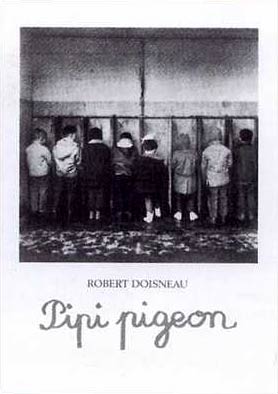
Learn foreign languages while watching your favorite YouTube videos!
The Language learning app is a handy set of tools that will help you improve your language skills by accessing subtitles, a built-in dictionary, and saving words and phrases you want to learn to revise.
Learning foreign languages will be an interesting and exciting experience for you!
Born: 1912
Died: 1994
Gender: Male
Nationality: French


“I’ve never examined why I make photos. In truth it’s a hopeless struggle against the idea that one will die. It’s something I’m more prepared for, because one shouldn’t think that every action is temporary and momentary. I try obstinately to stop this time that is passing.” Robert Doisneau.
Robert Doisneau was born in Gentilly in the Val-de-Marne near Paris. He studied engraving and lithography and went to work at lettering and advertising photographs in 1930. He began working for André Vigneau in 1931 as his cameraman, and then joined the Renault factory in Billancourt in 1934 working as an industrial and advertising photographer. Doisneau was fired in 1939 for being consistently late and joined the Rapho Photo Agency taking some of his first professional street photographs. With the outbreak of the Second World War, however, he was called upon to serve in the French Army for a year before working for the résistance until 1945.
At the end of the war he joined the Alliance Photo Press Agency but returned to Rapho a year later. In 1949 he joined Vogue as fashion photographer where he remained for three years before going freelance. Doisneau is best known for his street photography, his most famous example being ‘Kiss in front of the Palace of City Hall’ (1950). But he took thousands of photographs striving to capture the pulse of Parisian life. Like his contemporary Brassaï, Doisneau liked nothing better than to walk the streets never knowing what sights he was to encounter.
Doisneau’s work has been enormously influential on many photographers and film directors. His talent lay in his ability to capture a moment of poignancy, absurdity or just plain strangeness. Whether it was a sailor staring up at his pinups, ‘Pinups’ (1952), a dog with wheels replacing his hind legs, ‘Dog on Wheels’ (1977) or a portrait of Pablo Picasso with loaves of bread for hands, ‘Picasso and the loaves’ (1952), Doisneau’s work contained a distinctive sense of humour as well as a deep empathy for his subjects.